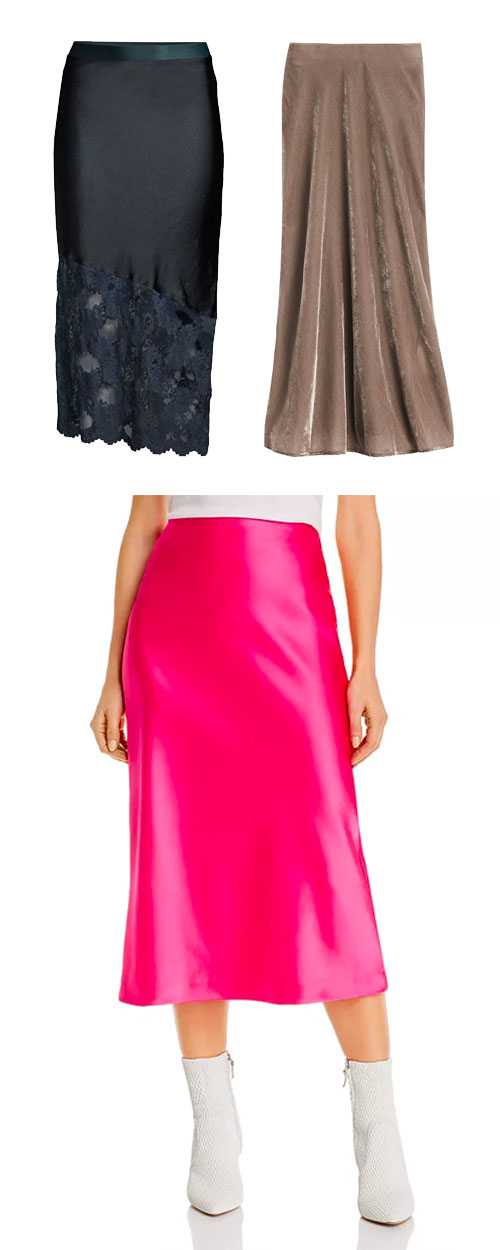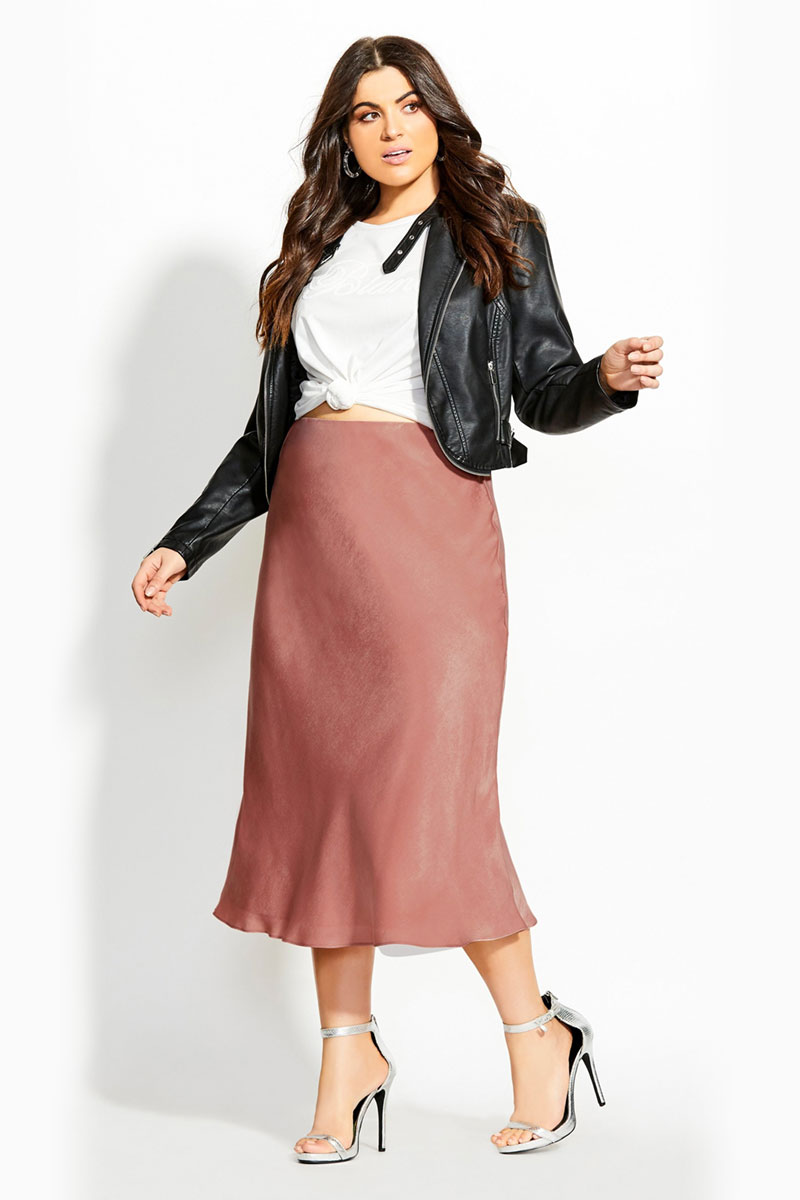I can’t think of a more ‘90s skirt than the slip skirt. It’s generally midi length, although maxis do exist. It’s knee-covering and bias-cut, which means that the pieces used to make the garment were cut on the diagonal bias of the fabric. In other words, the pattern pieces were not positioned parallel to the straight or cross grains of the fabric, but at a 45 degree angle. Bias-cut garments have an increased elasticity and flexibility, which causes extraordinary drape. It creates stretch without spandex, and swoosh without fabric volume. This means you can easily move and walk fast in a bias-cut skirt. It’s a fabulous way to wear a streamlined style that is not constricting.
Some bias-cut slip skirts have clever inset panels that add even more swoosh, drape and interest. Most are made of soft and somewhat slippery fabric to maximize movement. Most waists are elasticated. They are lightweight and generally suited to mild, warm and hot weather. The collection shows a good assortment.
The bias-cut slip skirt creates a unique type of structure that clings to the body with fluidity. It’s not like spandex that grabs the contour of the body showcasing lumps and bumps. The graceful and subtle flounce of a bias-cut can magically work for opposite body types, thereby creating a curve on a straighter body type, and gently flattening the curve of a rounder body type. The elastic waist is fab for those who like ease on the midsection.
I’m singing the praises of bias-cut skirts because they are that good when they are good. That said, they are awful when the bias-cuts are off. After fitting lots of bias-cut skirts on clients across various sizes and body types, there are three components that dramatically improve the fit and make a difference:
1. Length
Too short bias-cut skirts creep up and do not flounce. You’re after a length that is at least knee-covering, or hits the top part of the calf. That extra bit of length creates weight for garment drape, and to my eye looks more elegant. By all means wear a shorter untucked top with the skirt. No need to tuck or semi-tuck.
2. Room
True bias-cut skirts are pricey to manufacture because the patterns have to be placed on the diagonal, which increases the fabric consumption of the skirt. It’s much more cost-effective to cheat a little and place patterns less than perfectly on the diagonal, which decreases fabric consumption and the cost of the garment. As a result, fits are skimpy and lumpy, thereby creating bulges where you don’t want them. It’s important to find a bias-cut skirt with ROOM so that it drapes, moulds and stretches to the contour of the body, and lies flat.
3. Lining
Most bias-cut skirts look more streamlined and neat when they have lining that is the same length as the skirt. Unlined slip skirts tend to look flimsy and can lack polish and structure. They don’t twist around the body as much with a lining either.
A slip skirt in satin, silk, crepe or a ditsy floral is a fab nod to the ‘90s. I bought one in canary yellow velvet last year and I love it. I dressed it up for a casual Gala, to work with clients, and the holidays. I intend to dress it down with sneakers and a denim jacket when the weather warms up. YES, I will wear velvet in the Spring because why not! It’s an awfully comfortable skirt, and I don’t feel constricted like I do in a pencil skirt. It would be fun to find a Summery slip skirt for hot weather.Over to you. What’s your take on the ‘90s slip skirt? Yes, no, or maybe.














































